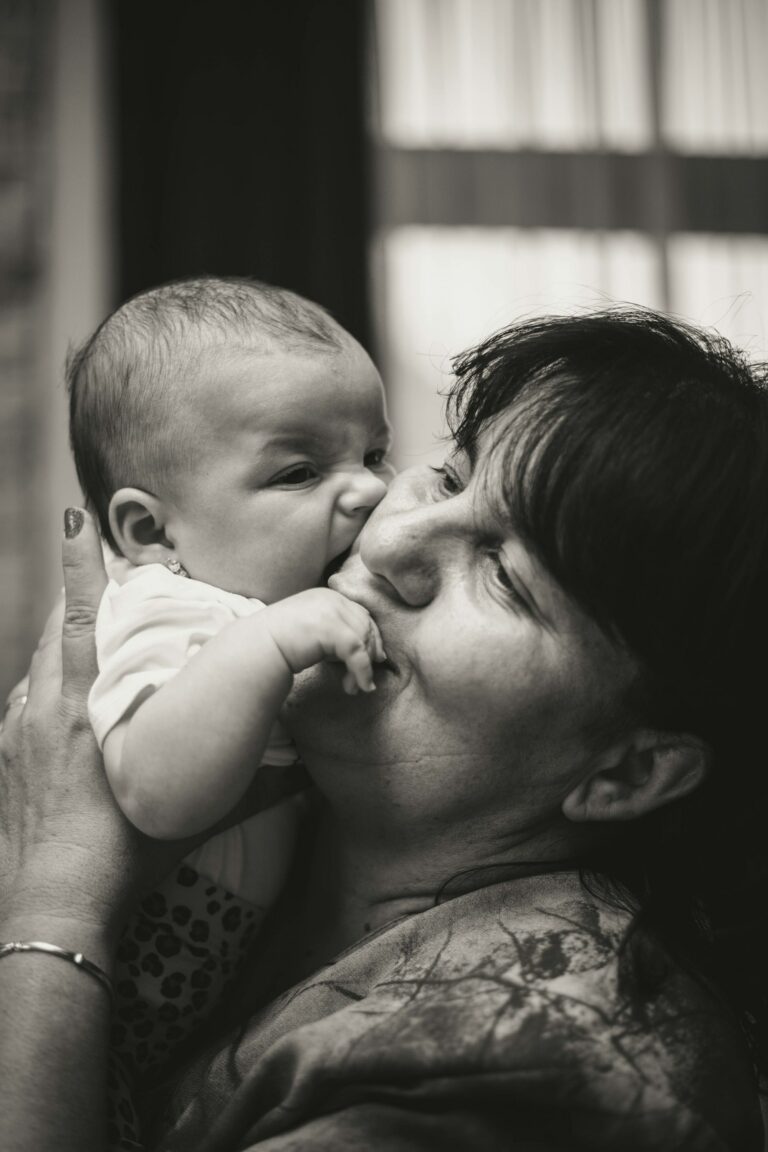Overflowing with energy, your child seems to bounce from one activity to another—restless, full of enthusiasm, yet constantly on the move. Maybe you find yourself wondering late in the night, after your child has fallen asleep at last: is this just an active temperament, or does it go deeper? Managing a hyperactive child can stretch any parent’s patience and stamina. Balancing their needs, keeping up with their vitality, and still ensuring a harmonious home—these challenges may seem overwhelming at times. There’s a world where everyday joy and chaos intertwine, but through early recognition, understanding the roots, and adopting the right strategies, both families and teachers can channel this tireless energy more positively. Expect practical solutions, expert insights, and straightforward tips, all aimed to bring more ease and less worry into daily life.
Recognizing a Hyperactive Child: Signs Parents Can Spot
What truly sets apart a hyperactive child from their peers? Not every energetic child is hyperactive. It’s only when their constant movement and impulsive reactions overshadow calm moments across multiple environments—whether at home, in school, or playdates—that deeper concerns arise.
Common indicators frequently noticed by parents and teachers include:
- Persistent fidgeting and squirming, even when stillness is required (think classrooms, prayer times, or mealtimes).
- Difficulty staying seated—chairs suddenly seem optional, with a magnetic pull towards running, climbing, or just roaming freely.
- A sensation of being “powered by a motor”, always “on the go”, rarely showing signs of fatigue even after extended activity.
- Excessive talking—words tumble out rapidly, sometimes interrupting or overlapping with others’ speech.
- Interrupting frequently, struggling to wait for their turn, and blurting out answers in conversations or games.
- Trouble engaging in quiet activities such as reading alone, drawing, or gentle play.
If these traits are observed regularly, and not just as the occasional burst of childhood excitement, it may signal a need to look closer—sometimes a professional assessment is required to determine if it reflects ADHD (Attention-Deficit Hyperactivity Disorder) or another developmental issue.
Hyperactivity Versus High Energy: Drawing The Line
All children are spirited at times, skipping between activities and exploring their world. But how do you discern high spirits from something more? A child with typical energy will switch gears—play intensely, then settle down with little prompting. In contrast, a hyperactive child rarely lets up; even at bedtime, winding down is a struggle.
Observe for:
- Constant need to move, even in structured settings like school assemblies or family gatherings.
- Difficulty falling asleep or waking often, almost as if their body struggles to “switch off”.
- Big emotional reactions—tantrums over small setbacks, or strong tears when routines are disrupted.
Such patterns, when persistent and intense, set hyperactivity apart from regular, age-appropriate energetic play.
Myths and Facts: Separating Fiction from Diagnosis
Several misconceptions surround the notion of the hyperactive child. Scientific studies debunk the idea that sugar directly causes hyperactivity—the association is more anecdotal than proven. Genetics and brain chemistry have a much stronger influence; environmental contributions (like disrupted routines), prenatal factors (premature birth, certain exposures), and sometimes diet sensitivities can all play in as well.
Importantly, parenting style shapes responses and support structures, but does not inherently cause hyperactivity. It’s not a sign of misbehavior, immaturity, or willfulness—neurodevelopmental origins, often hereditary, are central.
Some children appear calm but wrestle with internal restlessness, while others are outwardly peripatetic yet able to focus when engaged. Each scenario demands tailored understanding.
Diagnosing and Understanding: When to Seek Professional Insight
Formal diagnosis of hyperactive child behavior, particularly ADHD, typically occurs after age 6. However, patterns may emerge earlier—an infant who rarely settles, a toddler always on the move, a preschooler constantly climbing or fidgeting, a school-aged child who can’t sit through storytime. Diagnosing involves observing across multiple settings, gathering feedback from both home and school, and—and this is critical—using standardized tools like the DSM-5, which evaluates persistence, intensity, and developmental appropriateness.
Other conditions can sometimes present similarly—anxiety, sleep disorders, autism spectrum disorder, or sensory challenges. Multidisciplinary evaluation, involving pediatricians, psychologists, and sometimes therapists, helps differentiate.
Impact and Causes: How Hyperactivity Affects Family Life
The influence of a hyperactive child ripples throughout the household. Parents may feel mentally and physically fatigued, siblings sometimes become frustrated, and maintaining structured routines is often a daily test of consistency.
Causes are multifactorial:
- Hereditary predisposition—family history is significant.
- Neurological differences in brain circuits handling self-control and impulse regulation.
- Environmental aggravators—exposure to toxins (lead), chaotic domestic settings, and inconsistent day-to-day schedules.
- Occasionally, sensitivities to certain food additives may intensify symptoms.
Importantly, these factors do not reflect on parental care or affection. Instead, they offer vital clues for building effective support systems.
Proven Supports: Medical and Behavioral Strategies
Managing a hyperactive child is rarely about a single solution. Medical interventions—such as stimulant medications—may be recommended after detailed assessment; these aim to enhance focus and self-control, but always under pediatric supervision to monitor effects and side-effects.
Complementing medication, behavioral therapy carries immense value:
- Parent training equips caregivers with strategies for guiding their child’s behavior.
- Cognitive Behavioral Therapy (CBT) teaches self-regulation and emotional control.
- Neurofeedback and structured physical activity harness excess energy positively.
- Balanced routines—predictable mealtimes, physical play, story sessions, and restful bedtimes—provide a safety net, calming the storm.
It’s the ongoing dialogue between parents, teachers, healthcare providers, and the child that cultivates results. Schools must adapt with tailored supports, tracking academic, social, and emotional progress.
Parenting at Home: Practical Everyday Solutions
Transforming the household experience for a hyperactive child often starts with subtle changes:
- Careful observation: Taking note of triggers—does restlessness peak before meals or after screen time? Are there moments of calm signaled by music, favorite books, or tactile activities?
- Placing clear boundaries within nurturing routines: Visual calendars, reward charts, and timed transitions become powerful tools.
- Engaging the senses: Sensory play like clay modelling, gentle music, or tactile toys offer containment for wandering attention.
- Calming environments: Soft lighting, single-color decor, quiet nooks, and minimizing background noise can noticeably soothe heightened energy.
- Praising the positive: Rather than correct every slip, highlight each success, however small—a child glows with pride when acknowledged.
Discipline remains gentle, consistent, and anchored in empathy. Punishments are specific and predictable, never harsh; this builds trust and teaches consequence without amplifying anxiety.
Supporting Learning: School Strategies That Work
In educational settings, teachers and caregivers make a remarkable difference for the hyperactive child. Consider:
- Front-row seating: Fewer distractions, easier reminders.
- Frequent movement breaks: Channeling energy, not suppressing it.
- Breaking up tasks: Short, clear assignments, visual instructions, and one-on-one check-ins foster comprehension.
- Personalised plans: Individualized Education Plans (IEPs) and written accommodations tailor learning to individual needs.
- Structured social groups: Building peer relationships, practicing turn-taking, managing emotional reactions in real-world scenarios.
Collaboration with teachers, open communication, and celebrating incremental progress all serve to reinforce the child’s confidence.
Emotional and Social Growth: Beyond Academics
Hyperactivity can influence not just academic achievement but also emotional development and friendships. Children may feel isolated or misunderstood. Practicing “what to do” through role-play, helping them recognize personal feelings, and rehearsing responses equips them for playground and classroom. Consistently reinforce strengths—sports, drawing, storytelling, or music—wherever attention blossoms naturally.
Gentle prompts help a hyperactive child restore self-regulation: deep breathing, short breaks, or comfort objects in stressful moments. Bullying or exclusion is addressed decisively, with support from school staff and a clear message that every child belongs.
Professional support—therapists or counselors—may sometimes be necessary, especially if emotional or behavioral challenges persist.
Healthy Lifestyle Tips: Everyday Adjustments
Some days, it feels as though you’ve tried everything, yet restlessness persists. Consider:
- Structured opportunities for physical movement—morning walks, garden games, or cycle rides.
- Balancing vibrant activities with soothing periods: storytime, simple art, or gentle cues for relaxation.
- Limiting over-stimulation—avoid noisy environments, blaring screens, or long stretches indoors.
- Mindful nutrition—while most kids don’t react to sugar or artificial additives, some may show sensitivity; maintain a balanced, nutritious diet with regular hydration.
- Building consistent bedtime routines—comforting objects, predictable wind-down rituals, dim lighting to encourage deep, restorative sleep.
With deliberate adjustment, day-to-day tensions subside, replaced by a growing sense of mastery.
Key Takeaways
- Persistent, intense restlessness and impulsivity may indicate a hyperactive child—observe patterns at home and school for a comprehensive view.
- Not all hyperactive children have ADHD; a broad assessment helps clarify causes and tailor interventions.
- Medical understanding points to genetic and neurological influences, so guilt and blame are unfounded.
- Clear routines, careful observation, and positive reinforcement empower children—while reducing stress for the whole family.
- Schools play a decisive role in adapting environments and educational strategies.
- Professional support is always available—never hesitate to reach out.
- For further guidance and free health questionnaires tailored to children, download the application Heloa and benefit from personalised advice.
Questions Parents Ask
Can a hyperactive child thrive in school?
Certainly! Many hyperactive children excel academically and socially when supported by patient teachers, understanding peers, and proactive classroom adjustments. Movement breaks, varied activities, and encouragement of their unique talents enable growth and enjoyment in the school environment.
How can parents help their hyperactive child develop friendships?
Social cues and emotional reads may need some extra practice for a hyperactive child. Role-playing common scenarios, talking openly about feelings, and joining group sports where energy is celebrated can help immensely. Celebrating small successes, being patient with setbacks, and providing regular reassurance lay a strong foundation for lasting friendships.
When is it time to be truly concerned about a child’s hyperactivity?
Every child has energetic days. If, however, restlessness leads to regular disruptions at home or school, or if signs like mood swings, social withdrawal, or risk-taking emerge, reaching out to a healthcare provider is advised. Consultation with your pediatrician, school counselor, or psychologist ensures you and your child get the right support—never hesitate if doubts linger.
What practical steps support a hyperactive child at home?
Routine is your greatest ally. Schedule meals and bedtimes with consistency, introduce calming rituals in the evening, and use visual cues for transitions. Positive feedback for even minor achievements works wonders. If things feel unmanageable or emotional distress persists, don’t wait—assistance from child health professionals can lighten the load and provide effective, evidence-based strategies.
What resources are available?
Support is just a click away. Pediatricians, child psychologists, and school counselors offer direct assistance. ADHD support organisations and parenting forums share experiences, tips, and community insights. For tailored digital help, explore application Heloa for custom recommendations and free child health checklists.
Further reading:









